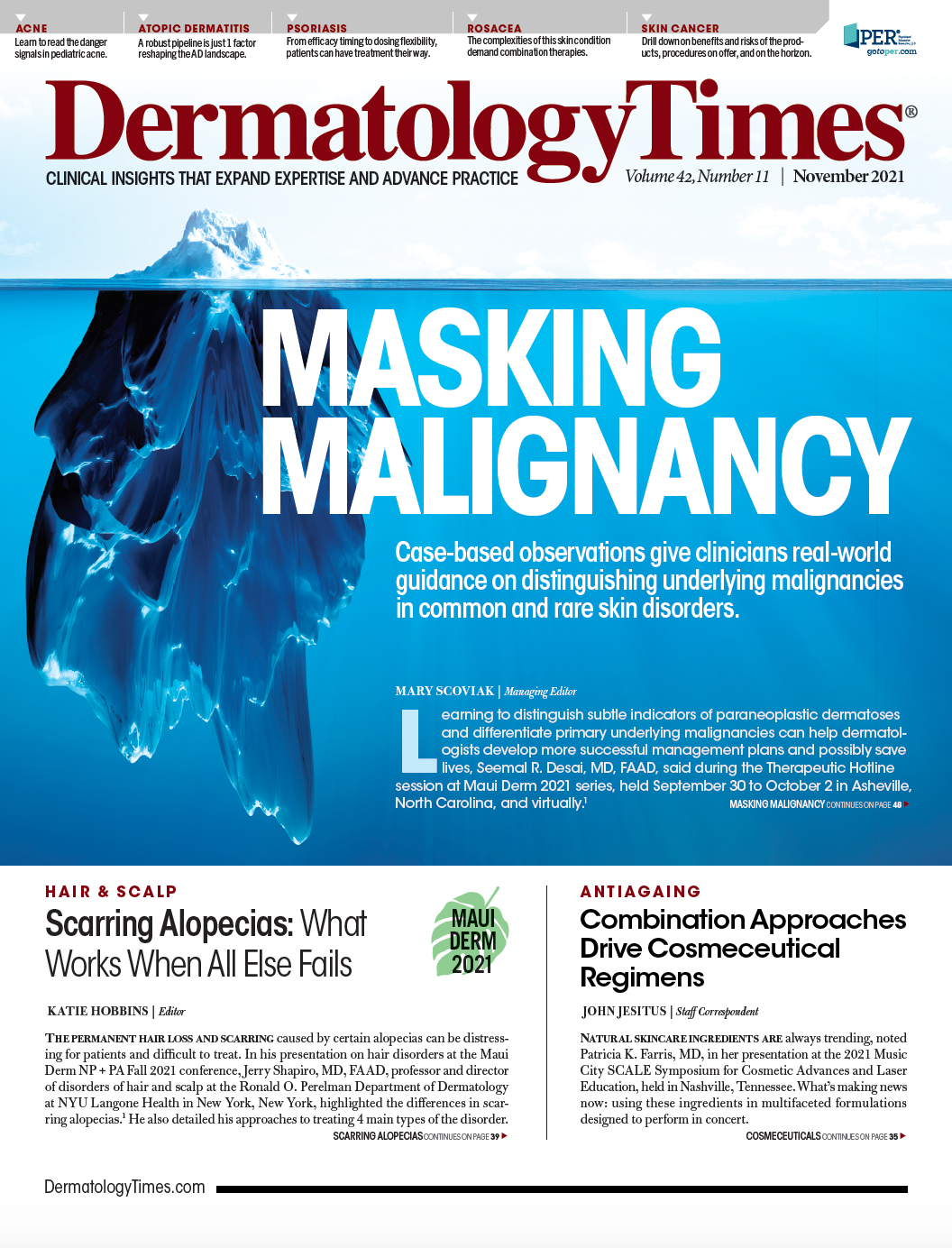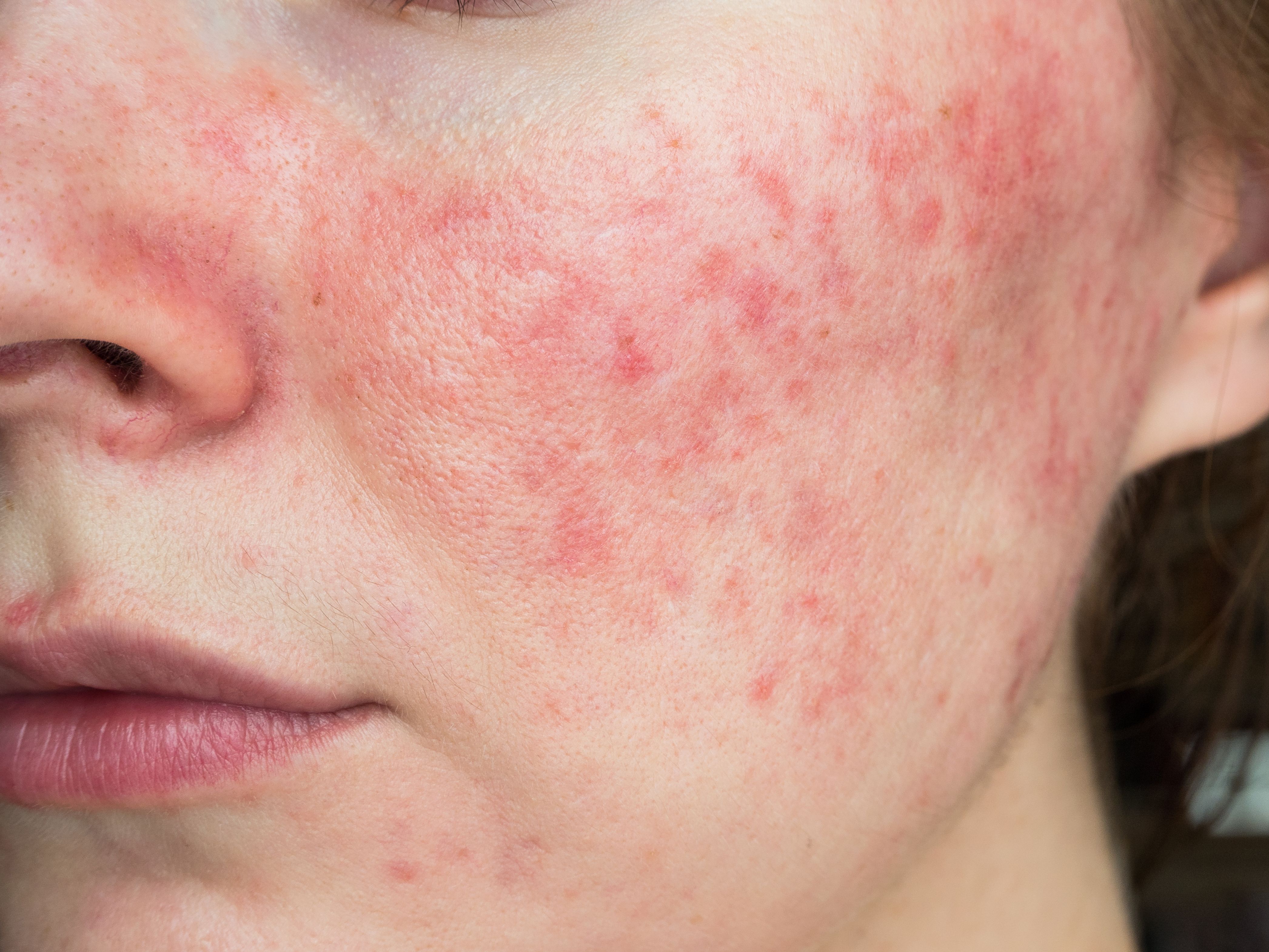- Case-Based Roundtable
- General Dermatology
- Eczema
- Chronic Hand Eczema
- Alopecia
- Aesthetics
- Vitiligo
- COVID-19
- Actinic Keratosis
- Precision Medicine and Biologics
- Rare Disease
- Wound Care
- Rosacea
- Psoriasis
- Psoriatic Arthritis
- Atopic Dermatitis
- Melasma
- NP and PA
- Skin Cancer
- Hidradenitis Suppurativa
- Drug Watch
- Pigmentary Disorders
- Acne
- Pediatric Dermatology
- Practice Management
- Prurigo Nodularis
- Buy-and-Bill
Publication
Article
Dermatology Times
Using Combination Therapies and Avoiding Subtypes for Rosacea
Author(s):
In this presentation on rosacea from Maui Derm NP+PA Fall 2021, Julie Harper, MD, explains why combination therapy is more effective and how classifying rosacea patients by subtype can lead to suboptimal treatments.
Subtypes for rosacea are outdated, according to Julie Harper, MD, a board-certified dermatologist in private practice at Dermatology and Skin Care Center of Birmingham in Alabama, who shared the latest thinking on rosacea with conference attendees at Maui Derm NP + PA Fall 2021.1
“Too often a [patient’s rosacea] has multiple features,” she said. “Let’s say [the patient] would have papulopustular rosacea. Well, how often do you have papules and pustules and you don’t also have erythema? Then you end up just treating a part of the whole issue.”
Harper gave the example of a 28-year-old woman who felt embarrassed by flushing, persistent redness, sensitive skin, burning, and irritation that she found difficult to conceal. To organize such a patient’s first visit and make sure both patient and physician understand the treatment plan and possible outcomes, Harper recommended employing the STOP method:
S: Identify signs and symptoms of rosacea
T: Discuss triggers
O: Agree on outcome
P: Develop a plan.
Building Combination Therapies
The 2 main targets in rosacea, according to Harper, are inflammation and the vessel. She emphasized that the vessel is often left untreated. Different triggers activate different pathways; some activate inflammation through innate immunity, whereas others activate vasodilation directly.
She compared the multiple treatments to cutlery: “A fork isn’t going to do the same job as a knife or a spoon, so when choosing treatments, make sure to consider all signs and symptoms.”
For bumps, Harper’s recommendations include ivermectin, metronidazole, azelaic acid, sodium sulfacetamide sulfur, modified release doxycycline, and minocycline. On her go-to list for erythema: brimonidine (Mirvaso; Galderma) and oxymetazoline (Rhofade; EPI Health). For other symptoms, such as telangiectasia and phyma, device-based treatments are helpful, she said.
Combination therapy aims to achieve clear skin quickly as well as maximize periods of remission and minimize the burden of disease, Harper said.
To treat rosacea, Harper has used an FDA-approved blood pressure medication, carvedilol, off label. She described a study that gave carvedilol, titrated up to a 12.5-mg dose for at least 6 months, to 5 patients with either frequent f lushing episodes or persistent erythema and burning sensations who failed previous treatments.2 Data showed that patient red- ness decreased, she said.
Development of combination therapies should also consider phototypes. Harper pointed to a study that compared doxycycline and propranolol in patients with skin of color.3 Investigators categorized the 78 participants by subtype (erythematotelangiectatic or papulopustular rosacea) and then grouped them to receive doxycycline, propranolol, or a combination of both.
Results revealed that patients improved at every time point. Although the propranolol worked faster than the doxycycline, both groups achieved the same results, according to Harper.
Botulinum toxin (Botox; Allergan) is effective for treating for flushing and rosacea, in Harper’s view, but can be expensive for the patient because insurance may not cover the treatment. “Also, be careful to avoid using too much and having an unwanted effect on facial muscle movement,” she cautioned.
For persistent background erythema, Harper recommended oxymetazoline and brimonidine. Each target 2 different α-adrenergic receptors, and both agents are effective. Results of a study on combining brimonidine and ivermectin showed this combination to be effective at reducing the redness and bumps caused by rosacea.4
Focusing on Ocular Rosacea
For patients with ocular rosacea, Harper focuses not only on good skin care, but also on eye care. Artificial tears can be an important part of the overall process, she noted. She has prescribed topical azithromycin for 1 week per month with good success.
She cited a study that combined ivermectin with modified-release doxycycline vs topical ivermectin 1% cream and placebo.5 Patients did achieve clear or almost clear skin more quickly with the combination treatment than with ivermectin and placebo but had similar results in reduced erythema, stinging, and burning, which also helped ease their ocular rosacea.
“My take-home messages would be: Don’t just use a fork when you can use more tools than that; use combination treatment,” Harper said. “Also, really take the time to observe and document all of the signs and symptoms of rosacea that your patient exhibits and describes. Lastly, don’t forget to target the vessel in those rosacea patients who have erythema as part of their dis- ease presentation.”
Disclosures:
Julie Harper, MD, has a conflict of interest with Almirall, BioPharmX, Cutera, Cassiopea, EPI, Galderma, Journey, LaRoche-Posay, Ortho, Sun, and Vyne.
Reference:
1. Harper J. Rosacea Update. Session presented at: Maui Derm NP+PA Fall 2021 conference Program; October 1, 2021; Accessed October 1, 2021. Asheville, North Carolina
2. Pietschke K, Schaller M. Long-term management of distinct facial flushing and persistent erythema of rosacea by treatment with carvedilol. J Dermatolog Treat. 2018;29(3):310-313. doi:10.1080/09546634.2017.1360991
3. Park J-M, Mun J-H, Song M, et al. Propranolol, doxycycline and combination therapy for the treatment of rosacea. J Dermatol. 2015;42(1):64-69. doi:10.1111/1346-8138.12687
4. Gold LS, Papp K, Lynde C, et al. Treatment of rosacea with concomitant use of topical ivermectin 1% cream and brimonidine 0. 33% gel: a randomized, vehicle-controlled study. J Drugs Dermatol. 2017;16(9):909-916.
5. Schaller M, Kemény L, Havlickova B, et al. A randomized phase 3b/4 study to evaluate concomitant use of topical ivermectin 1% cream and doxycycline 40-mg modified-release capsules, versus topical ivermectin 1% cream and placebo in the treatment of severe rosacea. J Am Acad Dermatol. 2020;82(2):336-343. doi:10.1016/j.jaad.2019.05.063







